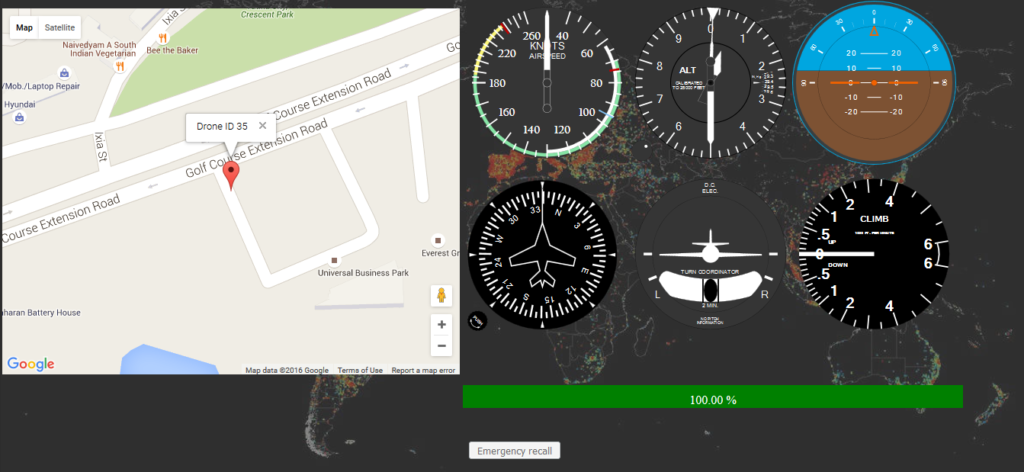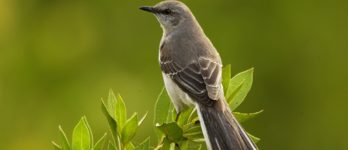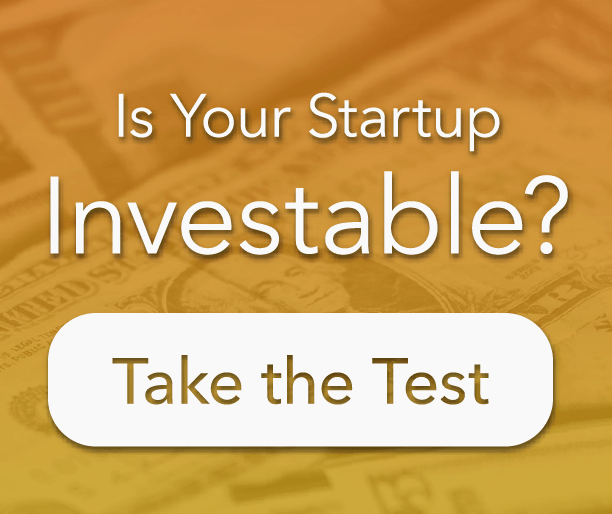
R2 Robotronics We were also really grateful to our mentors at Jaarvis Accelerator, where we are incubated, who kept us on our toes in terms of refining our business idea, seeing where we can maintain the edge and identifying opportunities for us to make connections and get feedback on the idea.
Name of Company: R2 Robotronics Private Limited
Location: New Delhi, India
Website: www.r2robotronics.com
Product/Service Offering: Cloud Navigation System, Enterprise Drone Management System
Co-founder Interviewed: Aman Singh
Other Key Management Team Members: Rakesh Routhu, Anirudh Tewathia
This article is part of our Business Startup Spotlight Series featuring entrepreneurs and their companies. We hope these founders’ interviews will inspire and motivate you as you undertake your own entrepreneurial journey.
Tell us a little about yourself with a focus on what motivates you.
Born into a military family, I have roamed the country and had an interest towards that sector since the start. I did my B.Tech in Computer Science from VIT Chennai, and then proceeded to obtain my MBA from FMS, Delhi. When it comes to work, I draw inspiration from my father, who kept his work as the first priority with an eye for detail. I have followed his policy and believed that nothing comes before work and the same thing happened for the startup. Specializing in Robotics, I always wanted to do something in this area and the rise of Indian startups only motivated me to take the leap forward. During the course of my MBA, I figured there may be an opportunity to use my knowledge and work on something new. I looked at global players and their technology fascinated me. This fascination of mine got the better of me when I decided to come back to the engineering area and reconnect with technology. The will to keep pushing that technological limit and keep testing what can be done is what sums up my work.
When did you establish your company and where did the idea originate?
R2 started with an idea that I had during my final days of engineering. I was specializing in robotics and despite having an internship with an established firm, I chose to pursue another project from the field of robotics for my dissertation in my final year. My fascination with robotics was triggered by the famous sci-fi series “Star Wars”. So, when I was doing my MBA and seeing startups come up all around me, I wondered if my knowledge of this field and the emerging opportunities in the robotics arena may turn out to be a powerful mix. After finishing the 1st year of MBA and completing my summer Internship, I realized that maybe a startup could be the way forward. When the 2nd year of MBA started, I discussed the idea with my co-founders Rakesh and Anirudh. We wanted to establish a company which would work towards developing the latest technology being developed globally for UAVs, UGVs, ROVs and Communication. We knew that R & D was something we wanted to do as India really needs a push on that front. So we started brainstorming. This was unlike the other startups we were seeing around us – they were looking to address a need through a service or a product, but we were trying to access a sector which needed a lot of things and couldn’t be served with just one or two products. We had to answer a lot of questions for ourselves:
- What was the NEED we were going to address?
- Were we going to stay as a R & D firm or we were going to sell products?
- Will we make something for the masses or stick to Govt./Industries?
- As this was a tech-heavy idea, investment in terms of Capital and Know-how would be very high; how will that work out?
Keeping everything in mind, we started working on the idea in September 2015, we identified the first project we would work on – the Cloud-Navigation System. We held a series of meetings with the people from Armed Forces and also studied the civilian drones so as to understand the technology and also the opportunity. We started working towards identifying students to hire in October and since then we have been getting people on-board, developing new technology and pushing the standards to international levels. Finally, the company was incorporated in January, 2016.
What need or needs does your company seek to fill for its customers?
Today, if an enterprise were to operate multiple drones at the same time, they couldn’t do it. Depending upon the number of drones, an equal number of pilots would be needed for simultaneous flight, rendering the use of drone swarms to be extremely costly. Those drones would be bound by range, human error, connectivity, etc. Our Cloud Navigation System (CNS) is made to fly drones in a semi-autonomous mode wherein the pilot does not fly a drone but a server does. The Flight Server maintains a link with all the drones in flight and keeps tracking them using a GSM-GPS combo. This tracking information is available to the pilot in the form of an interactive map, similar to that seen by an air traffic controller inside ATC Tower at airports. The system has the following features:
- Autonomous mode of flight
- Two-way communication between Base and Drone
- UI panel for observation
- Database for logging trips, orders and user data
- Emergency Call-back option
- SMS alerts for your client to approve/abort delivery
- GPS/GSM enabled all-weather communication backbone
- Plug and Play style of operation
- Option to draw your own flight path
In drones today, the control is done mostly through an on-ground RF transceivers that traditionally do not have long range. Our system can maintain an overall reach and control over the drone flying over the civilian airspace. The applications for our CNS product can be seen below:
- Commercial Logistics Delivery
- Disaster Management (Monitoring, Search & Rescue)
- Agricultural use – spraying, Seeding, Crop Growth Analysis
- City Planning – Land Use Pattern Mapping
- Police – City Patrolling, Guard duty at Jails and Polling booths
- Urgent Medical Delivery – Blood, Organs, Medicines
- Drone recovery
The CNS is a product completely developed in India and we are confident that there will be very few products outside that can challenge it. The product’s versatility helps us integrate it and customize it for your needs in a very short time.
What is the one thing that sets your company apart from its competitors?
The fact that our tech is scalable, lean and offers a high degree of customization is the biggest differentiator for us. The solution is geography independent which enables us to connect drones together on a side network. The fact that it is a platform gives us enough room for developing sector-specific solutions. We are hardware independent and hence we can adapt to any drone platform with ease, something not many players can boast about.
What was the biggest challenge you faced while getting your company up and running, and how did you overcome it?
 The biggest challenge we have faced so far is attracting investors. Sadly, the investor lobby in India hasn’t learned much in the past few years and still is looking to invest in areas where quick money is possible. Areas such as ours require high investment for R & D and the gestation period is pretty high due to the payback period for investment being anywhere between 3-5 years at a minimum. We participated in the “India International MSME Expo 2016” to generate awareness about our platform and interact with government agencies. We have been trying to communicate the idea that drones are the future, whether we like it or not. We are trying to tell the same to investors it is not an India-centric product. Drones have global applications and they should look at the fact that the technology may go out and revolutionize many sectors. The fact that we were awarded “Best Innovative Tech Startup” there only goes to show that we were able to communicate the idea to the audience.
The biggest challenge we have faced so far is attracting investors. Sadly, the investor lobby in India hasn’t learned much in the past few years and still is looking to invest in areas where quick money is possible. Areas such as ours require high investment for R & D and the gestation period is pretty high due to the payback period for investment being anywhere between 3-5 years at a minimum. We participated in the “India International MSME Expo 2016” to generate awareness about our platform and interact with government agencies. We have been trying to communicate the idea that drones are the future, whether we like it or not. We are trying to tell the same to investors it is not an India-centric product. Drones have global applications and they should look at the fact that the technology may go out and revolutionize many sectors. The fact that we were awarded “Best Innovative Tech Startup” there only goes to show that we were able to communicate the idea to the audience.
Looking to attract angel investor groups? Try FundingSage’s Angel Investor Startup Search Tool.
Are there resources you have utilized that other founders might find compelling or useful?
 We found a lot of support in our faculty, both from engineering and business schools. We were also really grateful to our mentors at Jaarvis Accelerator, where we are incubated, who kept us on our toes in terms of refining our business idea, seeing where we can maintain the edge and identifying opportunities for us to make connections and get feedback on the idea. We have been grateful to a wide network of researchers whose research helped us understand the basics of drone flight and also develop the entire system.
We found a lot of support in our faculty, both from engineering and business schools. We were also really grateful to our mentors at Jaarvis Accelerator, where we are incubated, who kept us on our toes in terms of refining our business idea, seeing where we can maintain the edge and identifying opportunities for us to make connections and get feedback on the idea. We have been grateful to a wide network of researchers whose research helped us understand the basics of drone flight and also develop the entire system.
Startup Accelerator Spotlight: Jaarvis Accelerator
What steps have you taken to secure funding for your company and what, if anything, would you do differently if you had to start over?
We have just started our attempts to generate awareness about the product. With a POC, it is easier to approach investors to explain an idea such as a drone control system. We participated in the recently concluded India International MSME Expo 2016, where we had opportunity with dignitaries such as Sh. Manohar Parrikar, Minister of Defense, and Sh. Ramesh Abhishek, Secy, DIPP, regarding the application of our system right from Armed Forces to agricultural fields. We were also able to secure sessions for pitching to a number of VCs at the Expo. We were also winners of the Startup FULLTOSS pitching event held in Delhi, wherein we pitched the idea to a jury of investors and accelerators. We are scheduled to pitch the idea to some VCs and Angel investors, courtesy Jaarvis, soon.
Have there been any questions you have had as an entrepreneur of a fledgling startup that you had a particularly hard time finding the answers to?
Often the entrepreneurs end up asking themselves who would be the ideal investor for them? Having had experience in Investment Banking, we used that experience to identify sector specific investors for our opportunitiy. But in India, especially in the sector we operate, investors are often wary of startups who operate in areas such as ours where a lot of use-cases pertain to the government sector. We also had some problems regarding identifying the IPR laws and issues. Protection of IP for tech enabled startups is essential.
What challenges, if any, are you grappling with?
- We wish to target government agencies and big conglomerates as our clients. Both these groups look for credentials before even expressing interest which is a huge issue for a startup. The lack of government incentive to invite startups to participate in critical areas such as Defense, Manufacturing and Agriculture is deeply appalling. Government incentive to startups is extremely necessary to trigger R & D in Defense as it is firms like ours who are flexible enough and can work in developing groundbreaking technology, not the conglomerates.
- The current ambiguity of the government regarding their policies on the use of UAVs is a major issue. Unless government releases its final policy on the sector, everything is a question mark. The DGCA in its draft guidelines failed to talk about any UAV development parks or designated flight space. This is necessary for regular flight testing and development.
- Competition from global players is immense. Companies from the U.S. and China, backed by huge investment in this field and cheap raw materials are making strides in development which keep us on our toes.
What is the most helpful tip or “hack” you’ve ever learned, stumbled across or been given?
I was once told by my business strategy professor, “Every morning when you wake up, just think if the need your product is addressing is still significant? If it isn’t you need to get back to the drawing table that very day.” Another thing we have learned over time is that there is no one better than Google to teach you something new. From innovation happening globally to finding people to help you with yours. Probably the most important one I was told by my mentors is “never underestimate a conversation – it can end up giving you ideas that might change your business completely.”
Is there anything else you would like to share about your company?
Our panel of advisors includes some of the leading industrial veterans and academic experts and has been a great asset to us. Their insights into the industry and the product have helped us find our direction numerous times. Our focus on development and understanding of the engineering have really played a part in our journey. More than everything, the ability of our team to make complex engineering simple is the key to growth for us. Given the fact that we are a pretty young company, a lot of growth still lies ahead of us.
Can’t find the tools to guide you through the startup process? TurboFunder can help map your path!
Save









